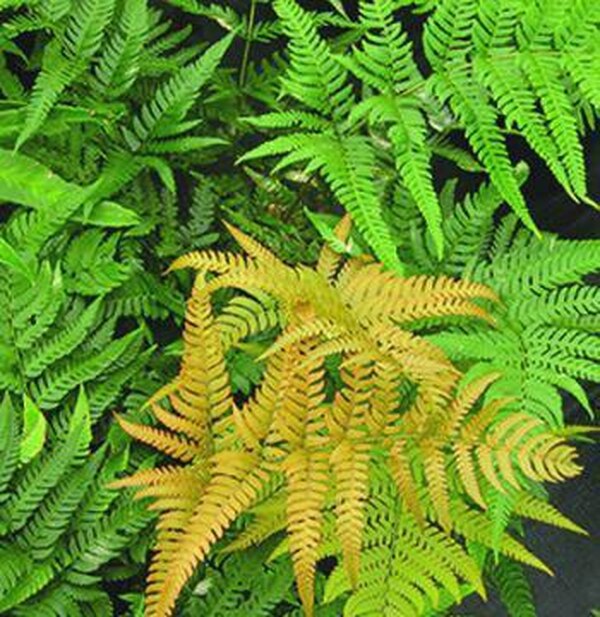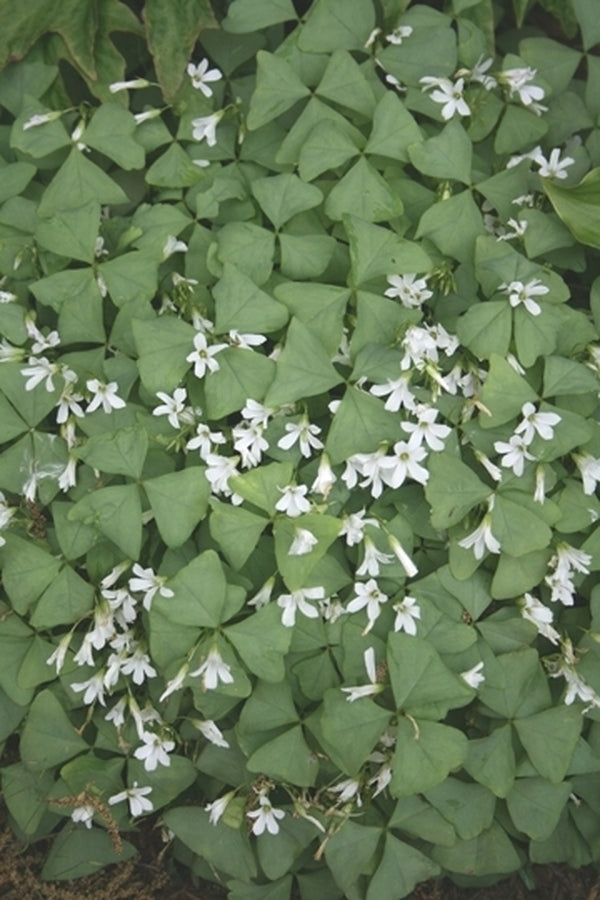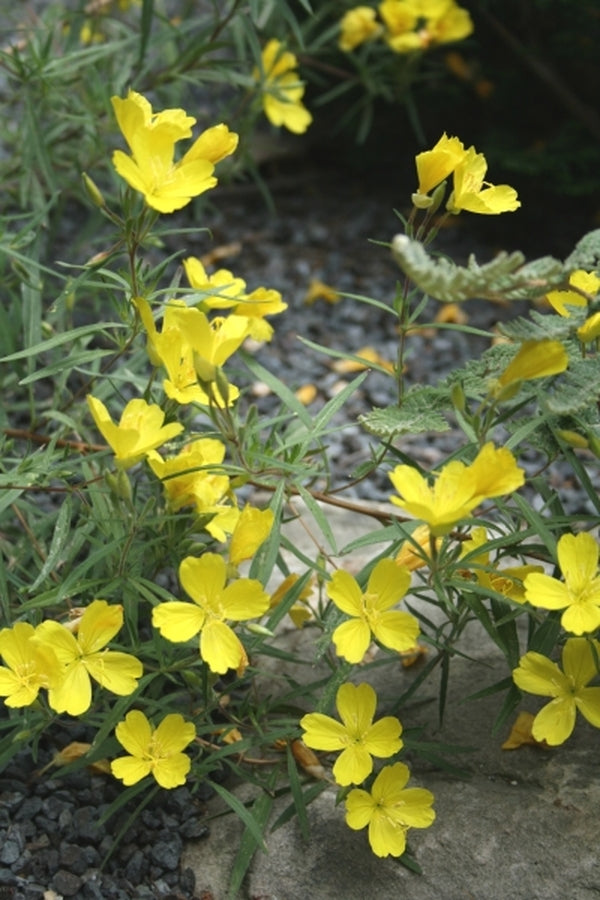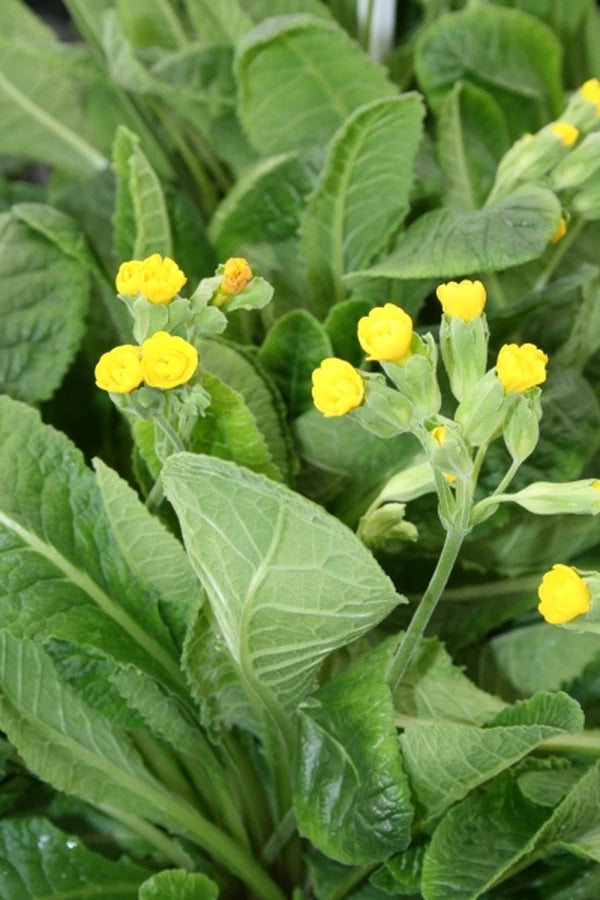When is a plant name not a plant name? The sad answer is more often than not in our current world, where marketing comes first and accuracy second. The current plant naming trend often violates the International Code of Nomenclature for Cultivated Plants (ICNCP), US Trademark Law, and occasionally the US Federal Trade Commission (FTC) rules concerning deceptive business practices. 
Primula 'Prinic' PP 12,892
To understand the problem, let's go back in time to 1952, when the first International Code of Nomenclature for Cultivated Plants (hence referred to as the Code) was published to standardize the confusing way in which plant cultivars were named. The Code sets forth the way people around the world communicate about plants, and as long as everyone abides by the Code, problems in horticultural communication are minimal. Unfortunately we have moved into a time where more and more people are undermining the Code due in part to both ignorance and greed, creating a taxonomic nightmare. 
Echinacea 'Pixie Meadowbrite' PP 18,546
The current trend of improper and confusing use of cultivar names and trademarks, both by growers and marketers of plants, has done an irreparable long-term disservice to the industry and the public by hopelessly confusing the naming of plants and the communication about these plants. Even in the latest edition of Dr. Michael Dirr's wonderful Manual of Woody Landscape Plants (5th ed.), it is clearly evident, even someone as knowledgeable as Dr. Dirr doesn't always know which is a cultivar name and which is simply a company's marketing name. 
Dryopteris labordei 'Golden Mist'
The Nomenclature Code
To understand where the confusion lies, let's start with a few basics about plant taxonomy. The naming of cultivated plants is governed by a small book, the International Code of Nomenclature for Cultivated Plants 2004. In the Preamble to the Code, the purpose is stated: "The Code aims at the provision of a stable method of naming distinguishable groups of cultivated plants, avoiding and rejecting the use of names that may cause error or ambiguity or throw the above disciplines into confusion." While the Code is not a legal document, such International Codes are usually recognized as legally valid in most court disputes. 
Clematis 'Sapphire Indigo' PP 17,012
In Principle 3, the Code states, "Each cultivar or group with a particular circumscription can bear only one accepted name, the earliest that is in accordance with the Rules." Principle 4 of the Code brings up another important point, "Names of plants must be universally and freely available for use by any person to denote a distinguishable group of plants. In some countries, plants are marketed using trademarks. Such marks are the intellectual property of a person or some corporate body and are not therefore freely available for any person to use; consequently, they cannot be considered as names." 
Oxalis triangularis 'Jade' PP 17,558
Article 19 of the Code further deals with cultivar names. The most pertinent section is Article 19.13, which states, "For a cultivar name to be established on or after 1 January 1959, its epithet is to be a word or words in a modern language other than Latin, except as permitted under Article 19.6, 19.7, and Article 19.24." There are many other requirements, but these are not pertinent for discussion of the trademark issue. Now that we understand the basis for naming plants, let's look at how the improper use of trademarks has made a mockery of the spirit of the Code. 
Eucomis 'Mini Tuft Bright Pink'
Trademarks
Trademark names are intended to be used only to designate product origin or brands. Trademarking can be as simple as writing ™ after a name, but for a more sound legal footing, the trademark is registered with the United States Patent and Trademark Office (USPTO). The trademark then becomes a Registered Trademark® for a cost of about $250 (unless you have it done by a lawyer). Trademarks are owned by an individual or company and cannot be affixed to an individual item. They are valid for 10 years if used correctly in commerce, and can be renewed indefinitely for 10-year periods. 
Oenothera 'Lemon Drop' PP 16,393
A classic example of a properly used trademark is Tylenol®. If you look through a drug store, you will find the company had registered Tylenol® as a trademark. The product that you purchase, however is not TYLENOL®, but instead one of many products, such as TYLENOL® Cold and Sinus Medicine or TYLENOL® Pain Relievers. In most of these products, the generic name is acetaminophen. If a company's trademark name becomes recognized by the public as the product itself (i.e. generic), the trademark becomes invalid. Several commonly known examples of trademarks being invalidated because they have become generic in the minds of the consumer include: aspirin, cellophane, thermos, and escalator. Many other incorrectly used trademarks are still in effect, simply because they have not been challenged. 
Salvia greggii 'Variegata' PP 8560
The current improper use of trademarks in the horticultural industry had its origin more than a half century ago. The worst culprits, in the early years, were the rose and bedding plant industry. The rose industry seems to have been the first to use nonsensical, non-conforming names for plant cultivars, while the bedding plant industry completely thumbed its nose at the Code by not even bothering to come up with any cultivar names for most of their introductions. One of the most famous roses in horticulture is one that everyone knows as Peace. Surprisingly, there is no such plant as Rosa 'Peace'. The plant we grow under this name is actually Rosa 'Madame A. Meilland'. The trade name Peace was coined by Conard Pyle Nursery, and used to market Rosa 'Madame A. Meilland' after World War II to capitalize on the post-war sentiment. The plant became known in the public's mind as the Peace rose.
Some of the larger nurseries soon realized that regardless of the cultivar name of the plant, they could come up with their own proprietary (trademarked) marketing name and use these names to promote plants which already had valid cultivar names. The idea was to convince the public that the company's marketing name was actually the name of the plant. The next step in the downward spiral was when nurserymen began intentionally giving their new plants stupid nonsensical cultivar names. Subsequent plant promotions would often only tout the marketing name, causing the consumer to often not realize the plant had a real cultivar name. The cultivar name, if included at all in ads and tags, would be printed in very small print in comparison to the "marketing name". The entire idea is for the company's marketing (trademark) name to become the generic name of the product in the consumer's mind. The practice of using nonsensical names violates the entire purpose for having an International Code of Nomenclature for Cultivated Plants while the use of trademarks as generic names violates the legal use of trademarks.
Some breeders blindly follow such trends in choosing nonsensical cultivar names, not realizing that these names are the only official name of their new introduction. A UK primrose breeder, Geoff Nicolle, wanted to name and patent his new primrose after his granddaughter Katy McSparron. Instead he patented it under the cultivar name Primula 'Prinic' PP 12,892 and marketed it under his granddaughters name. I have corresponded with his granddaughter who is furious and stubbornly insistent that the plant is named after her. Unfortunately, it's becoming quite common where people who are to be honored or commemorated with a plant being named after them are left with nothing but an invalid trademark with no plant attached. A great new plant is then stuck with a nonsensical name.
As I mentioned earlier, Article 19.13 of the Code does not allow for the use of these nonsensical names. In contradicting itself, however, the current version of the Code now allows nonsensical code name exceptions (Article 19.27). This is where political pressures have crept into what should have remained a scientific document. Privately, one of the authors of the Code told me the breeders of certain worldwide crops such as alstroemeria, carnations, and roses would raise too much of a fuss if the nomenclature committee made the wording in the Code any stronger. In other words, the authors of the current edition of the Code caved to those who were already violating the Code, similar to the concept of changing laws so that the number of criminals diminishes.
Many breeders and growers of new plants properly choose to try and recoup their investment in producing a new plant by securing a royalty payment from those producing the plant. Plant patents are the only legal means of protecting a proprietary plant. Patents are good for 20 years (formerly 17 years) after the date of patent filing. After this time, anyone can legally propagate and sell a formerly patented cultivar. Patents require quite a bit of paperwork and a fee that many smaller growers may find a bit expensive. Many growers have the false impression that trademarks give them an easier and cheaper alternative to patents, but this is not the case.
To further complicate matters, some plants are both patented and subsequently marketed under a company's trademarked name. Some nurserymen think they can get the 20-year protection the plant patent provides, plus a further measure of protection by trademarking a second (marketing) name for each plant. Once the patent expires, others could propagate a formerly patented plant, but in theory could not sell it under the company's trademark name. A classic example is Monrovia's Limemound® spirea. At the end of its patent protection in 2003, everyone could propagate Spirea 'Monhub' PP5834, but Monrovia assumed no one else could then legally sell the plant as Limemound® spirea. Unfortunately both nurseries and many trademark lawyers who advise nurseries seem not to understand basic trademark law.
Trademark law states that a trademark name can be used with (not for) any product produced by the owner of the trademark. For example, if the owner of the trademark was growing four different gold spireas or 100 different trees, they could all be marketed under the same trademark name, despite being distinct cultivars. Trademark names belong only to a company, and not to a particular plant or product. In other words, a single cultivar named Limemound spirea does not exist.
Article 12.1 of the Code cites Rosa 'Korlanum', which is marketed under three different trademark names, each owned by a different company, Surrey, Sommerwind, and Vente D'ete. This causes the public to assume that there are three different roses, when they are all the same plant. In the case of Loropetalum chinensis 'Hines Purple Leaf', it is marketed under at least two different trademark names, Plum Delight, and Pizzaz. This practice is becoming more common as the lack of understanding about proper trademark use deteriorates. Are you confused yet?
The issue becomes more confusing the more you investigate. Do you remember the Cornus florida x kousa hybrid dogwoods from Elwin Orton's breeding program at Rutgers? They were patented with the cultivar names of C. 'Stellar Pink' PP7207, C. 'Galaxy' PP7204, C. 'Aurora' PP7205, C. 'Constellation' PP7210, C. 'Rutfan' PP7206, and C. 'Rutlan' PP7732. As you can see, all of the dogwoods except two were given sensical (word or words in a modern language) cultivar names. Interestingly enough, once the dogwoods hit the market, the original sensical cultivar names were changed by the breeder to nonsensical names and the original sensical cultivar names were then trademarked. For example, Cornus 'Stellar Pink' became 'Rutgan' (Stellar Pink®), 'Galaxy' became 'Rutban' (Galaxy®), 'Aurora' became 'Rutdan' (Aurora®), 'Constellation' became 'Rutcan' (Constellation®), 'Rutlan' was marketed as (Ruth Ellen®) and 'Rutfan' was marketed as (Stardust®). This violates the International Nomenclature Code; section 19.13 as cited above and #9 of the Preamble, which states "The only proper reason for changing the name of a distinguishable group of plants are either a more profound knowledge of the facts resulting from adequate taxonomic study or the necessity of giving up a name that is contrary to the Rules of a Code." Therefore the correct names for each of these hybrids were the original cultivar names under which they were patented. The reason for the name switching is so that once the patent expires, anyone can sell the dogwoods under the nonsensical names, but in theory they cannot use the breeders trademark name. By trying to make sure everyone knows the plants generically by his trade name, the breeder has, however, intentionally rendered his trademark invalid.
If you visit the United States Patent and Trademark Office website, www.USPTO.gov, you will see the Patent Office itself has no understanding of either US Trademark Law or the ICNCP. A classic example of this confusion occurs in the patented plant, Itea virginica 'Sprich' PP 10,988. Despite the fact the cultivar name of 'Sprich' is not a "word or words in a modern language" (Article 19.13) and therefore violates the spirit of the Nomenclature Code, it has become the legal cultivar name once it was indicated as such in the patent application. If you read the patent application for I. virginica 'Sprich', it states, "The new Itea virginica cultivar is being marketed under the trade name Little Henry®." Because a trademark cannot be permanently affixed to a particular item, it shows the USPTO doesn't even understand their own regulations.
This use of trademarks as secondary "pseudo-cultivar" names for a particular plants violates both the spirit of the Nomenclature Code, as well as US trademark law. Trademark law clearly states if a trademark name becomes the common use (generic) name of a particular item, then the trademark becomes invalidated. Trademark lawyers have long advised nurseries to write the cultivar name in single quotes and smaller type and then the trademark name without single quotes in larger type. In their minds, this keeps their trademark valid. Nurseries are also told by their trademark lawyers as long as they enforce their trademarks, by making sure the cultivar name is always included with the trademark name, their trademarks would remain valid. This bizarre thinking, however, defeats the entire reason for improperly using trademarks, which is to trick the public into thinking the trademark name is the generic name of the product. It is this intentional deceit that will one day bring the Federal Trade Commission onto the horticultural scene.
A properly used trademark would be one such as Star® Roses, which is used to market a large group of roses under a single umbrella trademark. This trademark would have remained valid if they had not then began using their trademark to also market individual cultivars such as Rosa 'Wezaprt' as Bronze Star™ Rose and Rosa 'Wezlavn' as Silver Star® Rose.
Horticulture Trademark Court Cases
Until 2006, one of the few cases that might have gone to trial was when Iverson Perennials tried to enforce a legal trademark they owned for the name Scabiosa 'Butterfly Blue'. The unpatented plant had been previously published with 'Butterfly Blue' as the cultivar name, so they were wrong in both trying to trademark a cultivar name and also by using their trademark improperly on a single product. Fortunately, a number of nurseries banded together against Iverson's and the trademark infringement case was abandoned before it reached court.
Finally, in 2006, a case of improperly used trademarks actually reached the courts in Van Well Nursery Inc. et al. v. Mony Life Insurance Company et al. (decided March 16, 2006). In this complicated case, Mony Life Insurance Co. acquired property from A/B Hop Farms due to a defaulted loan. The property contained apple trees known as Smoothee® and Scarlet Spur®. When Mony Life Insurance Co. tried to sell the land by mentioning that it contained Smoothee® and Scarlet Spur® apple trees, Van Well Nursery and Hilltop Nurseries sued for trademark infringement. Their contention was that the apples trees were actually the cultivars 'Snipes' and 'Gibson', although they had marketed them under the trademark names Smoothee® and Scarlet Spur®. The Lanham Trademark Act, section 15, says is not the actual misuse of the trademark for a single product that makes it invalid, but instead the perception of the public that the trademark name is the product itself that renders the mark invalid.
The judge in the Van Well case correctly ruled that in the public domain, the apples were known as Smoothee® and Scarlet Spur®, and therefore the legally registered trademarks were now invalid, because they had become known as the product instead of the source of the product. (The Smoothee® trademark was actually not immediately cancelled, only because the owner was not a party in this particular lawsuit.) The Scarlet Spur® trademark was cancelled despite the fact the trademark owners had followed their legal advice and always included the registered trademark symbol along with the correct cultivar names when advertising the apples. The case hinged on the age-old adage in determining the validity of a trademark. A trademark must tell "who you are" and not "what you are."
This case has huge implications for those in the nursery industry who have improperly used trademarks to market individual plants for the last several decades. The case illustrates that despite best faith efforts on the part of the trademark owners to keep their trademark names valid, it is impossible once the public views the trademark name as generic. Not only will the industry be left with shameful nonsensical cultivar names that will exist as long as the plants are grown, but nurseryman who have spent large sums of money on trademarks and trademark attorney fees and then used the trademarks in violation of US Trademark Law, will be left feeling the financial sting with no way to recoup their losses. Once the Federal Trade Commission (FTC) wakes up and is urged to act as they were recently with the discrepancy of advertised and delivered pot sizes, those who market individual plants under trade names will have another fight on their hands.
It would be nice if nurseries, who indeed are ethical, but misinformed would take the lead in reversing this terrible trend. It would also be a nice change if groups such as the Perennial Plant Association (PPA) and the American Nursery and Landscape Association (ANLA)* would take a strong position on the long-term detrimental effects of dual plant naming through trademarks, both to the industry and the consuming public. The best way to end this trend is for reputable nurseries to take a public stand against this confusing practice for the long-term good of horticulture. Short of this, it is going to be up to the Garden Writers Association (GWA) and the American Public Gardens Association (APGA) to identify plants by their one and only cultivar name, and hopefully at the same time embarrass those who persist in making up stupid nonsensical names for good plants and illegally using trademarks to deceive the public.
*American Nursery and Landscape Association (ANLA) and the Association of Horticulture Professionals (OFA) consolidated in 2013 to form the American Horticulture Association (AmericanHort.org)
References
USPTO Web Site uspto.gov
Making Your Mark by Vincent Goria/October 1, 1996/American Nurseryman
Manual of Woody Ornamental Plants - Michael Dirr - 1998
International Code of Nomenclature for Cultivated Plants - 1995
ANLA Directory of Plant Patents - 1997
Plant Patents and Federal Trademarks on Plants - National Association of Plant Patent Owners
Bitlaw - The Lanham Act bitlaw.com/source/15usc/
Seattle Trademark Lawyer - Trademark Claim Winner Not a Prevailing Party Against Association (Van Well Nursery case), seattletrademarklawyer.com/blog/2008/3/12/trademark-claim-winner-not-a-prevailing-party-against-associ.html

